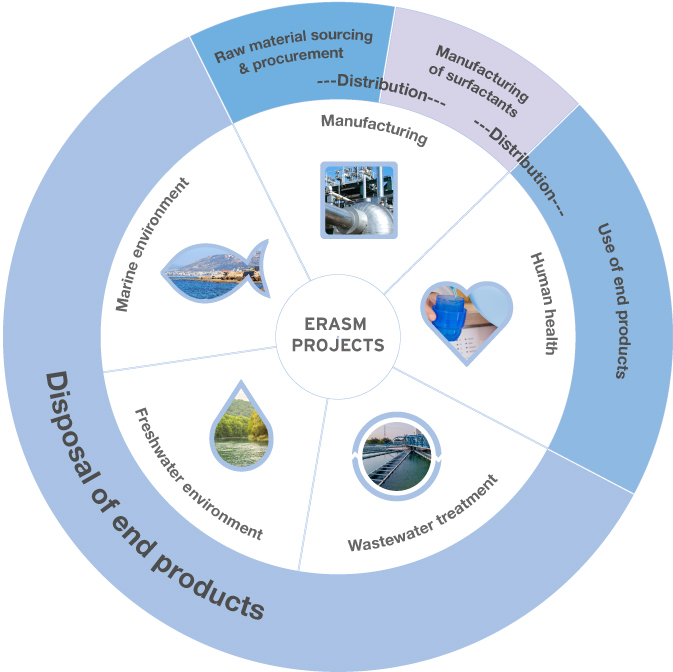
Value Chain of Surfactants and Life Cycle Assessment
Value chain of surfactants
The value chain of surfactants, similar to other chemicals and most manufactured products, can be assessed through a thorough quantitative or semi-quantitative analysis often referred to as life cycle assessment [LCA]. Life cycle assessment provides a more informed overview of the impact of surfactants on the environment and the input needed with respect to energy and material employed throughout the whole value chain to improve the sustainability profile.
ERASM research in the 1990’s originally focussed on the environmental impact of surfactants, which essentially concerns the disposal phase of the value chain and the resulting impact on the freshwater environment and the marine environment. However, in recent years, much work has been done on the effects of surfactants on human health essentially during the use phase of detergent products.

Life cycle assessment
To conduct a lifecycle assessment and carry out a systematic process of data collation and interpretation, the goal and the scope need to be defined as a first step.
Furthermore, qualitative and quantitative information on the use of raw materials and energy consumption as well as the generation of waste and environmental impact needs to be collected. This process is also known as Life Cycle Inventory or LCI. Based on the information obtained, the impact associated with inputs and releases can be analysed and assessed. By interpreting the results obtained for a given surfactant in a specific use scenario, a more informed decision on the most sustainable use can be made to improve the sustainability profile.
Due to the physico-chemical properties and the intended use, most surfactants reveal a similar lifecycle profile. As organic chemicals, the raw material base is either mineral oils or renewable raw materials (raw material and sourcing). The manufacturing of surfactants, as well as the formulation of end products, are industrial processes conducted under tight surveillance and control. They are comparable with respect to their energy and waste profile. The use phase is highly important for energy consumption as well as human exposure, especially for consumers using these products. Since surfactants are predominantly used in water, they are discharged of via wastewater, hence their behaviour in wastewater treatment plants, and their impact on aquatic organisms needs to be assessed.
